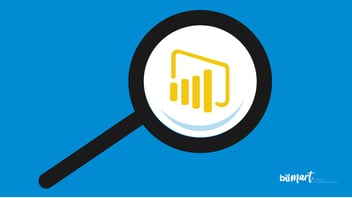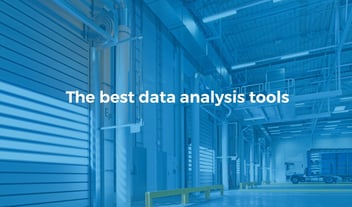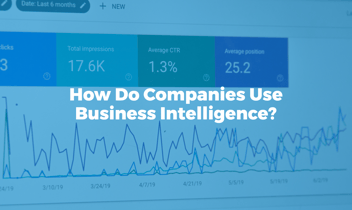Do you know the top data analytics tools on the market? We present a list with the 9 best data analytics tools for companies!
The impact of data analytics in business is growing, which has caused the proliferation of analytic technologies that aim to help companies make the most of their data. However, choosing the right analytics tool that meets our business needs is extremely important. In this article we list the 9 best data analytics tools of 2022!

Today, data analytics plays a major role in business. Increasingly, organisations require quality data to help them understand the market, customers, competitors and their own activity. Data analytics and data science have become the main focus of leading companies and, while ten years ago only a few organisations used data analysts, the demand is now increasing.
Business trends are progressively moving towards a data-driven culture, data-driven decisions and the deployment of data-related processes such as data collection, data consolidation and data governance.
Analytical software vendors have responded to companies' growing demands, which has resulted in more and more data analysis tools available on the market. The increase in supply, however, makes it more difficult to choose the right tool according to our business logic, our objectives and what we want to achieve with the data.
Below, we list the 9 best data analytics tools for companies.
What is data analytics?
Data analytics is the process of examining and interpreting data sets to uncover meaningful business insights, patterns, trends, and relationships that can be used to make informed decisions and gain a deeper understanding of various phenomena. It involves the application of statistical, mathematical, and computational techniques to analyze and interpret large volumes of data, often with the goal of extracting actionable information.
Data analytics encompasses several key steps:
-
Data Collection: The first step in data analytics is gathering relevant data from various sources, which can include databases, spreadsheets, logs, social media, sensors, and other data repositories.
-
Data Cleaning and Preprocessing: Once the data is collected, it is essential to clean and preprocess it to ensure data accuracy and consistency. This process involves handling missing values, removing duplicates, and transforming data into a suitable format for analysis.
-
Data Exploration: In this stage, analysts explore the data visually and descriptively to understand its basic characteristics, distribution, and potential patterns. Data visualization tools and techniques are often used to help gain insights from the data.
-
Data Analysis: In this step, analysts apply various statistical and machine learning methods to analyze the data. This could involve running regression analyses, clustering algorithms, classification models, time series forecasting, and more, depending on the nature of the data and the objectives of the analysis.
-
Interpretation and Insights: After the analysis is performed, the results are interpreted to draw meaningful insights from the data. These insights can lead to informed decision-making, identification of opportunities, and the understanding of underlying patterns or trends.
-
Communication and Visualization: The final step is to communicate the findings to stakeholders through data visualization, reports and dashboards. Effective communication of results is crucial to ensure that the insights are understood and can be acted upon.
What are data analytics tools?
Data analytics tools are software applications or platforms that facilitate the process of analyzing and interpreting data to extract meaningful insights. These tools provide various functionalities to collect, clean, transform, visualize, and analyze data, helping users gain valuable information from large datasets. Data analytics tools can range from simple spreadsheet software to complex, specialized software designed for advanced data science and machine learning tasks. Here are some common types of data analytics tools:
The 9 Best Data Analytics Tools
1. Power BI
Power BI is Microsoft's data visualisation and analysis tool and one of the most popular in the market due to its business logic, its multiple capabilities and a better usability than other platforms.
More than a tool, Power BI is a set of business intelligence services that helps organisations organise their data, analyse it and present it in the most effective way to facilitate intelligent decision making.
Power BI has many advantages, including its ability to integrate with virtually any corporate system, its powerful visuals and how ease it makes creating reports and dashboards. Power BI also promotes data integration as it connects to more than 60 data sources and, through Power BI Embedded, facilitates the distribution of data, dashboards and reports.
At Bismart, as a Microsoft Power BI partner, we develop many of our dashboards and solutions with this set of services.
2. Excel
Excel is another of Microsoft's most popular analysis tools. Virtually all data analysts use this tool, which includes analysis capabilities through a spreadsheet that makes it easy to work with data, perform calculations and apply formulas quickly.
While Excel also includes visualisation capabilities, they are much less comprehensive than those of Power BI. Microsoft Excel is more oriented to mathematical analysis and tabular reporting, while Power BI enables reporting in multiple formats. In addition, Excel is not a platform designed to work with Big Data and it can only process a limited amount of data. On the other hand, its data processing capabilities are more extensive than those of Power BI.
Finally, Excel is a great platform for working alone, but it makes collaborative work difficult. Nevertheless, Excel is undoubtedly one of the most used analysis platforms and has been a must-have for organisations for many years.
3. Tableau
Tableau is a very complete data analysis software that, like Power BI, allows the creation of dashboards, maps and visualisations from data. Its free version, Tableau Public, allows non-experts in data analytics to play with their data and transform it into more or less complex visualisations.
However, in order to leverage Tableau's full potential, you need to know how to code and a powerful data source, as it is more difficult to use than Power BI.
Finally, Tableau connects to various sources and databases such as Microsoft Excel or corporate data warehouses.
4. Qlik
Qlik is a suite of data analytics, data integration and programming platforms that includes several tools. Among them we have QlikSense and QlikView, which are specifically for data analytics and business intelligence. Qlik is deployed in a hybrid cloud that has a fairly complete offering of integration and analytics processes, including functions for data warehouse automation.
With Qlik we can integrate and transform data, create visualisations and dashboards from analytics, and venture into augmented analytics. Like many of the other technologies listed, this is a good option for transforming data into intelligence and facilitating business decision making. Qlik is a complete business intelligence solution that allows companies to analyse multiple sets of data stored in different sources, providing a global view of the information available.
It also allows statistical analysis, as well as the creation of dynamic charts, presentations and visualisations.
5. Python
Python is one of the most widely used open source softwares for programming and developing through code. More than a platform, Python is a programming language that works through object-oriented scripts. It is very similar to other programming languages such as Java Script or PHP, but its particularity is that it is a simple, readable and easy-to-code language. In other words, compared to other languages, Python is one of the easiest to learn.
The tool includes machine learning libraries and integrates with other programming platforms such as JSON, SQL or MongoDB.
Obviously, in order to use this programme we need to have knowledge of code. However, it is also a great option for beginners who want to get in the world of programming and coding due to the readability of its code.
6. Looker
Looker is Google's data analytics and BI platform.
Using this platform, organisations can analyse and integrate data from multiple data sources and create interactive reports and dashboards. The tool also offers the possibility to work with workflows and create customised applications.
7. Rapid Miner
More than an analytics platform, Rapid Miner is an integrated data science tool that facilitates control over data sets and predictive analytics.
The advantage of this tool is that it enables several advanced analytics models such as machine learning, data mining or text analytics without the need for programming. Moreover, it integrates with virtually any database: IBM, Oracle, Excel, Access, SQL, SPSS, etc
8. Apache Spark
Created in a lab at the University of California in 2009, Apache Spark is one of the leading data science platforms on the market because it is open source and simplifies the processing of both structured and unstructured data.
Apache Spark is a big data solution, as it can handle large datasets that are too large or complex for other databases. It has a powerful processing engine and greatly facilitates the creation of pipelines, cluster management, machine learning and deep learning.
On the other hand, the tool has its own machine learning library, MLib, where users can download algorithms for classification, regression, collaborative filtering, etc.
Finally, Apache Spark is compatible with several programming languages such as Python, R, Scala, Java, SQL and .NET.
9. QuickSight
QuickSight is Amazon's BI and analytics software. It is a cloud service that integrates with cloud data sources such as AWS, SaaS, Excel, etc.
QuickSight's objective is to enable decision makers to explore their data and interpret information in a simple and visual way. However, it also has advanced capabilities and, for example, can be used for machine learning. Like Power BI, it allows sharing of analyses and reports and facilitates collaborative analysis.
Conclusion
Data analytics is part of businesses' daily activity. Most companies already have at least one of the technologies listed here and, according to predictions by major international technology consultancies, the importance of data analytics in the business world will continue to grow.
In this article we have presented 9 types of analytics, data science and business intelligence tools whose functions tell us where the latest trends in analytics and data are heading.
If you want to learn more about how you can get more out of your data assets and generate strategic value from analytics, don't hesitate to contact us! One of our data analytics and BI experts will be happy to help you.



